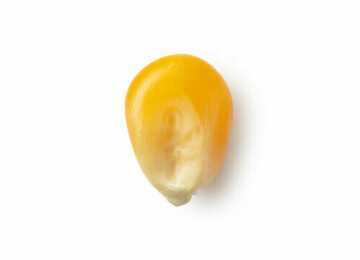The frozen corn

Last week was P & D (Poverty & Distress). This week frozen corn. Come along the rail that connects the two.
In hindsight the dandy-dream of connecting Port Arthur and Duluth by rail ‘pears unreasonable as growing frozen corn, despite the apparent perfection of our environment to do so. I’d ask the skeptics to say just why growing frozen corn wouldn’t work. Explain it to me, because drilling (electric of course for planetary saving) kernels into frozen earth is a lot easier than laying rail. Somehow we know that (rail is heavy and awkward) despite overlooking the unseen aspect of the world of rail. Huh? It’s called grade.
One thing a loco on with iron wheels traveling steel rails dislikes the way frozen corn defeats germination is the reality of hills. Hills and valleys are the enemies of grade which must at all times be gentle, meaning relatively flat. Metal wheel on metal rail is a traction dilemma butt for the weight of engine sticking wheels to rail. (More to it than that, including use of sand, but this’ll do for now.)
Who’d know better’n run rail above the Twin Ports into canoe country? Fur traders. Their French called it “high country,” as in steep-rugged as opposed to flat, as in “Pays platte.” If historian teaching wasn’t biased it would know the meaning (it’s no secret) of platte and how the term appears frequently in geographic description for places (reasonably level plains as example) with favorable grade.
So, well before anyone was steam engine-ing anywhere on rails or otherwise it was clear to those who did early travel-exploring that what we call Canoe Country laying above the Twin Ports was a rough patch. (Simply getting up there required a portage – Grand – of eight miles facing the happy trader-traveler. See, back then in the dumb days words had substance behind them telling a person a grande portage meant you better have fine soles or a good pair of shoes before making that walk.)
Likewise, highway meant high way, a road on high or raised ground rather than the muddy depression roads became as traffic left ruts etc. with every foot, hoof and wheel. The further removed we get from portage and trail the less likely we seem to regard what came before.
Superior grew important based on favorable terrain. The Incline Rail in Duluth was a cable system. Getting raw materials to the Twin Ports for shipment out demanded a favorable grade to get there. Period. Ore trains didn’t come booming down from above, did they? Reliable IC engines and rubber tires are so prevalent now we don’t consider iron-bound wagon wheels or steel locomotive wheels when we think of transport.
It’s not wheels or words that are neglected or ignored because wheels and words never in their lives put together a sentence or a string of cars. We do that, and I don’t think it a poor practice to be reminded of basics. Possibly think this way. If electric transport was dead easy we’d all hop a Lionel to get to work or go shopping.
The need, however, to modernize and improve stays with us, though. The musty old pioneer soon desired a faster horse and more horsepower than suited plowing. Faster and easier is always better, I guess. At least we seem pretty eager to not get off the couch or spend time incorporating skills and knowledge; not when a speedy meal can replace peeling potatoes or a system will do the drudgery of spelling and pepper gay mare fir us.
Could it be that easy carries a price we might not want in the long run when standardized planning runs into steep Duluth hillsides where things work somewhat differently than on a grade, and we don’t mean in a gradebook.
Advantages by not having to look at the old-outdated, let’s get to the frozen corn of advanced agriculture done without the antiquated past. The new era of frozen corn growth begins on any of our area’s many lakes. Ice forming flat and true provide perfect fields for planting using the latest in remote controlled all lightweight electric planting rigs drilling kernel holes to supply frozen water to nurture frozen (to use the English form of a non-regional borrowed term) maize.
Thinking not aligned with progress made in wordsmithing (in this instance word-aging) might dismiss as foolish the growth of fast freezing maize, but detractors would be as out-of-step agriculturally and are deniers of medical affirmation practiced on bunions or the necessary de-tickling of human tickly parts. Advances in all areas of wordsmith engineering make it abundantly clear that no limits exist and all preconceived notions of plant growth are, so to speak, out the window, or in this case not to be packed away in ice.
To deny a human future based on unlimited biologic progress is the fall into antiquated practices of recognizing useless nomenclature in the dead speech of Latin taxonomy cluttering the modern mind with genus and species posed according to the husbandry of outmoded days of patriarchal systems of colonial designation that have too long impeded progress, freedom and many other real-good things as well.
Respecting Reader readers I disclose that planting of frozen crops has gone by far better than harvest. To date harvesting of creamed corn is the only bright spot, and then only for the small audience of creamed corn lovers. But a birds’ eye (hint-hint, look-it-up) view has hope on the horizon as frozen whole kernel harvest techniques rise toward agrarian reality.
It’s a race as arctic, Siberian and Norwegians growers battle for first place in the contest for the golden kernel where will and determination triumphs (a small, possibly ominous, hat-tip to L. Riefenstahl) over mere farming as it was known in dreary ages before lofty wording grew grand designs of flowery fictional factualities able to blossom in any weather or clime. My but we live in grand times.
Thankfully we have sedatives equal to the task.
